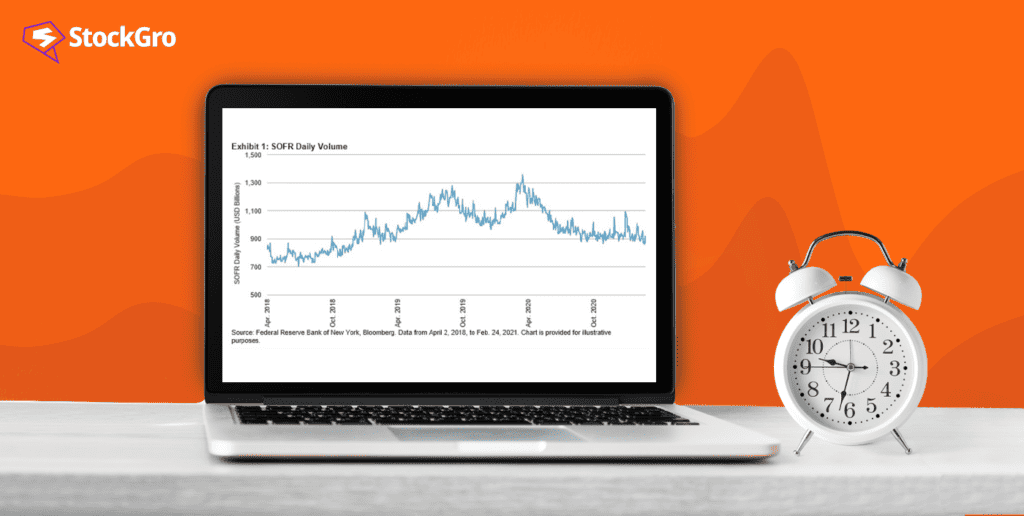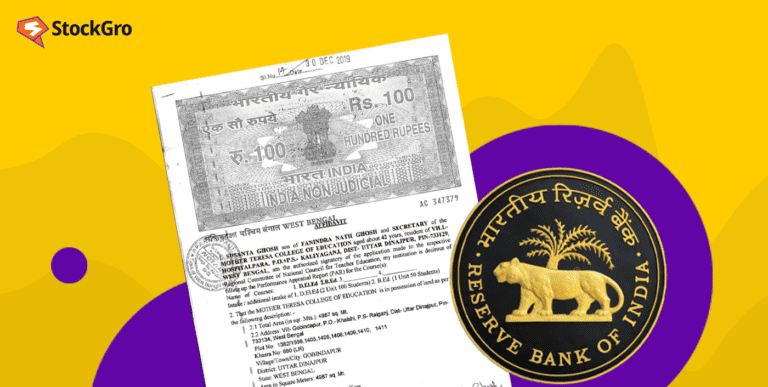
Have you read about banks borrowing and lending from each other? Yes, banks provide loans to other banks in the interbank lending market.
At the end of a business day, some banks close with surplus funds, while others close with a deficit. This brings us to the concept of overnight financing, called the Marginal Standing Facility (MSF) in India.
Various rates like the SOFR, LIBOR and MIBOR are applicable on these overnight loans.Hence, it is vital to understand these concepts, to analyse their impact on the economy.
What is SOFR rate?
SOFR full form: Secured Overnight Financing Rate
A replacement for LIBOR, the SOFR is the yardstick for determining lending rates between banks and financial institutions for short-term loans.
The SOFR rate is determined on the basis of transactions that take place in the U.S. treasury repo market.
A repo market, also called the repurchase market, is where sellers sell short-term securities with an agreement to buy back in the future.
SOFR as on 31 Aug 2023 was 5.31%.
You may also like: What is Yield to Maturity? Make profitable bond investments based on YTM calculations.
Source: SOFR interest rates 2023
LIBOR and related issues
It stands for London Interbank Offer Rate (LIBOR)
LIBOR was considered the benchmark rate for interbank lending before introducing the SOFR.
It is calculated based on average estimates provided by top banks in London. The estimates are calculated based on the bank’s opinion on the rate at which they are willing to borrow funds from other financial institutions.
LIBOR had a considerable role in aggravating the adverse implications of the financial crisis in 2008.
There are also allegations of this rate being inaccurate and manipulated.
The International Continental Exchange (ICE) also noticed that the banks have changed their way of dealing with lending transactions, because of which LIBOR has become more unreliable.
SOFR vs LIBOR
- While LIBOR is only based on estimates and opinions, SOFR relies on actual transactions in the treasury repo market.
- Loans under SOFR are secured since securities from the treasury market act as collaterals here, whereas LIBOR provides unsecured loans.
- The interest rate under LIBOR is higher since it includes credit risk. SOFR offers lower interest rates as the credit risk mitigates through collaterals.
- While LIBOR is available in 5 currencies (USD, JPY, CHF, GBP, EUR), SOFR is only available in USD.
Also Read: Dividend Rate vs. Dividend Yield
MIFOR
The adaptation of LIBOR in Indian financial systems is called MIFOR.
MIFOR – Mumbai Interbank Forward Offer Rate.
MIFOR was regarded as the point of reference for various financial contracts entered by commercial banks in India.
A combination of LIBOR and forward rates was used to create MIFOR in India.
The forward rate is a pre-determined interest rate for a future financial transaction.
Since MIFOR was based on the theory of LIBOR, MIFOR is also considered unreliable.
Moving to SOFR from LIBOR
On 30 Nov 2020 – The Federal Reserve declared that LIBOR be completely replaced with SOFR by June 2023.
The banks were asked to stop entering new contracts based on LIBOR by the end of 2023.
LIBOR was one of the most significant rates in the global financial industry. Transitioning from that to a new rate is quite a challenging task, for all parties involved.
Benefits of incorporating SOFR:
- The SOFR uses a powerful method of calculation backed by various sets of data, while the LIBOR is only an average of estimates given by banks.
- SOFR is less prone to manipulations as it is established on the basis of actual figures.
Though a better benchmark rate than the LIBOR, SOFR is criticised based on the below parameters:
- Under the SOFR, the rates are volatile and prone to fluctuations, making the market volatile, too. The volatility is due to rates getting updated on a daily basis.
- SOFR is based only on USD, while LIBOR is available in various currencies. Loan agreements involving different currencies may become complex.
Calculating the SOFR
By evaluating the volume-weighted median of transactions of three markets, the New York Federal Reserve publishes SOFR every day.
Volume-weighted median:
1. Place all transactions in an order from lowest to highest rate.
2. Calculate the cumulative sum of volumes.
3. Look for the rate associated with the transaction in the very middle of the list.
The three market data sets involved in SOFR:
- Tri-party repo
- General Collateral Financing (GCF)
- Bilateral treasury repo transactions – cleared through Fixed Income Clearing Corporation’s (FICC) Delivery vs. Payment service (DVP)
The New York Federal Reserve publishes the SOFR at 8 a.m. every morning.
SOFR in India
The suggested alternative reference rates in India are the Secured Overnight Financing Rate (SOFR) and the Modified Mumbai Interbank Forward Outright Rate (MMIFOR).
The Reserve Bank of India (RBI) instructed all banks to complete their transitions from LIBOR to new rates by July 2023.
Marginal Standing Facility (MSF): A facility provided by RBI for banks that have exhausted all other ways of raising funds from RBI.
Through MSF, banks can borrow money from RBI at a rate higher than the repo rate, called the MSF rate.
Also Read: RBI MPC meeting: Repo rate unchanged, what does it mean for you?
Alternative Reference Rates Committee (ARRC)
ARCC is a committee of private participants formed by the New York Federal Reserve to assist in the transition of LIBOR to Alternative Reference Rates (ARR) like SOFR that are more resilient and reliable.
ARRs of different currencies
| USD | Secured Overnight Financing Rate (SOFR) |
| CHF | Swiss Average Rate Overnight (SARON) |
| GBP | Sterling Overnight Indexed Average (SONIA) |
| JPY | Tokyo Overnight Average Rate (TONAR) |
| EUR | Euro Short Term Rate (ESTER) |
Bottomline
The SOFR is regarded as a strong and reliable rate, as compared to LIBOR, considering the widespread data and robust methods of calculations involved. Today, it is one of the most sought-after rates in the field of global finance.
RBI has instructed all Indian banks and financial institutions to transition fully from LIBOR to other alternative rates.
The process of changing rates is indeed complex as it requires a thorough revamping of the systems, and there is also an impact on consumer-related bank rates.
Axis Bank is the first private bank in India that executed a financial deal on the terms of SOFR in October 2021.

